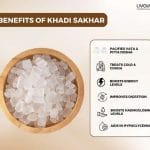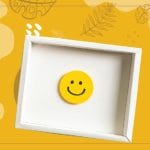
Fungal skin infection is a type of skin infection caused by various types of fungi, including molds and yeasts. The medical term for fungal skin infection is Mycosis. In Ayurveda, the issue of fungal skin infection is called Dadru kustha. [1] This is looked upon as a tridosaja vyadhi showing the dominance of pitta dosha and kapha dosha. When fungi attack your skin, you are said to suffer from superficial mycosis, a term widely used in Western medicine. The other types include systemic mycosis & subcutaneous mycosis. [2] Many types of fungi trigger fungal skin infections, the commonest being candida ablicans.
The root causes of fungal infection on skin include excessive sweating, friction, and poor hygiene. [2] A person with a weakened immune system, poor blood circulation, and health issues like Diabetes is also prone to fungal skin infections. The most prevalent types of fungal skin infections include jock itch, athlete’s foot, ringworm, oral thrush, vaginal yeast infection, and diaper rash. If you search for skin fungal infection pictures online, you’ll understand what the infected skin looks like. Red, scaly, lumpy skin that itches and pains are the primary symptoms of skin fungal infections. According to Ayurveda, the fungal skin infection consists of the following features and characteristics:
- Utsannamandal (elevated, bumpy, circular skin lesion)
- Kandu (itching)
- Daha (burning sensation) [1]
- Raga (erythyma)
- Pidaka (eruptions)
As these infections are rarely serious, they can be treated at home with simple home remedies. This article will introduce you to the various home remedies for fungal infection on skin. Read on:
Best home remedies for fungal infection on skin
- Neem

Extracts of Neem plant can be used to treat fungal skin infection. Washing the affected area of the skin with Neem water can inhibit fungal growth. [3] The bark, roots, as well as leaves of Neem can be used to prepare this anti-fungal herbal wash.
- Turmeric
Applying turmeric paste on the affected area is one of the most common home remedies for fungal infection on skin. The Curcumin compound in turmeric exhibits impressive antimicrobial properties. [9]
- Aloe Vera
The therapeutic properties of Aloe Vera gel (Ghrit Kumari) can destroy even the most stubborn infection-causing fungi. [10] Apply the gel topically on the affected area to relieve fungal-infection-related itching and skin inflammation.
- Garlic
How to cure fungal infection on skin with garlic? Allicin compounds in garlic can treat various types of fungal skin infections. [7] You only need to crush a few cloves of garlic to make a smooth paste and apply the paste topically on the affected area. Do this regularly to see results.
- Honey
Honey is a natural source of Hydrogen Peroxide and can effectively treat fungal infections. It is the best natural fungal skin infection treatment against the Candida species of fungus. [4]
- Tea tree oil
Tea tree oil, an essential oil, has immense antimicrobial capacity. Terpinen-4-ol, a vital tea tree oil component, can effectively fight yeast fungal skin infection. [5]
- Cinnamon Oil
Essential oil extracted from cinnamon sticks can be used to treat certain types of fungal skin infections [15] The essential oil can damage the cellular membranes of the fungi and kill the microbes.
- Coconut Oil
Coconut oil is an effective antifungal cure for drug-resistant candida fungi. [8] Also, the fatty acids in coconut oil can fade the marks left on your skin due to fungal infection. In other words, this dense, thick oil makes an appropriate answer to ‘how to remove fungal infection marks from skin’.
- Anti-fungal, medicated soapy water
Wash the area with medicated soapy water to keep it absolutely clean and prevent the fungal infection from spreading to other areas of the body. Make sure to use warm water during this cleansing process. Follow this cleansing routine twice daily for best results.
- Spilanthes
The Spilanthes herb has active antifungal agents and can be an excellent home remedy for opportunistic fungal attacks on your skin. [11] Use Spilanthes tincture to wash the affected area regularly.
- Yoghurt
Yogurt contains high amounts of probiotic bacteria. The good bacteria in yogurt can lower the rate of fungal colonization [6] and keep your skin healthy.
- Apple Cider Vinegar
Do you wish to know how to cure fungal infection on skin naturally with Apple Cider Vinegar? Apple cider vinegar is acidic and, thus, can inhibit fungal growth. [12] Applying apple cider vinegar to the affected skin area can lead to a quick recovery.
- Lemongrass Oil

Apply lemongrass essential oil to the skin area affected by fungal infection. Lemongrass oil can destroy the candida species of fungus. [13]
- Oregano Oil
Another effective antifungal agent is oregano oil. Mix 3-4 drops of Oregano oil with some carrier oil and apply on the affected skin area. [18] You could also consider taking oregano oil pills orally.
- Grapefruit Seed Extracts
Grapefruit seeds extract has the curative power to treat skin fungal infections. To apply this, mix a few drops of grapefruit seed extract with a little amount of water and apply topically on the affected area. [14]
- Baking Soda
Use baking soda for fungal skin infection. Baking soda is a commonly-used home remedy for skin fungal infection. Dusting the affected area with baking soda powder absorbs all moisture keeping the area dry and preventing the fungi from thriving. [16]
- Hydrogen Peroxide
Soaking the affected area in Hydrogen Peroxide solution destroys the infection-causing fungi, and brings you relief.
- Mint Extracts
The mint extracts and mint oil can treat skin fungal infection. Mint extracts can reduce skin inflammation, irritation, redness and itchiness.
- Ginger
Gingerol, a compound in ginger, can treat skin fungal infections. [17] Extract the juice from the ginger root and apply topically on the affected area. Also, drink ginger tea for fast recovery.
- Fennel Extracts

Fennel extracts and oil extracted from fennel seeds come with anti-inflammatory properties. The fennel oil is highly effective against fluconazole-resistant yeast. [19]
FAQs
1. How does Ayurveda propose to treat fungal skin infections?
There are certain Ayurvedic herbs that are used to treat fungal skin infections. Neem, Ashwagandha, Tulsi, and Haridra are powerful herbs with remarkable anti-inflammatory, antiseptic, antispasmodic, and antibacterial properties. Apart from these, other Ayurvedic ingredients to treat fungal skin infections include Katuki (Picrorhiza kurroa), Gandhaka (Sulfur), Nimba (Azadirachta indica), Amalaki (Indian Gooseberry), Karpura (Camphor), Narikela taila (Coconut oil), Haritaki and Triphala. [1] These ingredients can purify your blood and eliminate Ama visha (toxins) from your body, giving you healthy, fungus-free skin.
2. What are the prevention tips for fungal skin infections?
You must follow the given tips to avoid fungal skin infections:
1. Wear breathable clothes
2. Wear clean clothes
3. Bath daily with medicated soaps
4. Keep the skin area absolutely clean and dry
3. What should be the best diet plan for sufferers of fungal skin infections?
Fungal skin infections do not attack people who have a strong immune system and a body devoid of toxins. Thus, you must consume foods rich in antioxidants, as these foods can empower your immune system.
Here is an ideal diet plan for you:
1. Start your day with a glassful of Amla juice. Amla is loaded with antioxidants.
2. At breakfast, consider taking a besan cheela. You may include all colorful vegetables in the cheela, like tomatoes, carrots, beetroots, bell peppers, green peas, and even leafy greens like spinach. Along with the cheela, you may take homemade garlic chutney. Garlic is known for its antifungal properties.
3. At mid-meal, you may take orange juice. Vitamin C in oranges is an immunity-booster.
4. At lunch, you may take Rice/Roti with sprouts salad, a bowl of Indian chickpea curry/mixed lentils curry, and a bowl of curd.
5. In the evening, you may snack on roasted pumpkin seeds and Turmeric tea.
6. At dinner, you may take ragi roti along with palak ki sabzi
7. At bedtime, you may take a glass of turmeric milk.
Conclusion
Fungi are around us all the time, So it is common to get a fungal skin infection at some point in our lives. You can treat these fungal infections with simple ingredients in your home and kitchen.
Disclaimer
This article is written from a health and wellness perspective and is not medical advice. Kindly seek the help of a certified medical practitioner before initiating any treatment.
References
- Successful Ayurvedic Management of Dermatophytosis–A case study
- Prevalence and Risk Factors of Superficial Fungal Infection among Patients Attending a Tertiary Care Hospital in Central Nepal
- Antifungal effect of aqueous and ethanolic extracts of neem leaves, stem bark and seeds on fungal rot diseases of yam and cocoyam
- Antifungal activity of four honeys of different types from Algeria against pathogenic yeast: Candida albicans and Rhodotorula sp.
- The Influence of Tea Tree Oil on Antifungal Activity and Pharmaceutical Characteristics of Pluronic® F-127 Gel Formulations with Ketoconazole
- Impact of Eating Probiotic Yogurt on Colonization by Candida Species of the Oral and Vaginal Mucosa in HIV-Infected and HIV-Uninfected Women
- Fungal infection control by garlic extracts (Allium sativum L.) and modulation of peritoneal macrophages activity in murine model of sporotrichosis
- In vitro antimicrobial properties of coconut oil on Candida species in Ibadan, Nigeria
- A Review on Antibacterial, Antiviral, and Antifungal Activity of Curcumin
- Antifungal Effect of Malaysian Aloe vera Leaf Extract on Selected Fungal Species of Pathogenic Otomycosis Species in In Vitro Culture Medium
- Phytochemistry, Pharmacology and Toxicology of Spilanthes acmella: A Review
- Antifungal and Antibacterial Activities of Apple Vinegar of Different Cultivars
- Lemon grass (Cymbopogon citratus) essential oil as a potent anti-inflammatory and antifungal drugs
- Grapefruit seed extract effectively inhibits the Candida albicans biofilms development on polymethyl methacrylate denture-base resin
- The Effects of Cinnamaldehyde (Cinnamon Derivatives) and Nystatin on Candida Albicans and Candida Glabrata
- Antifungal activity of sodium bicarbonate against fungal agents causing superficial infections
- Survey of the Antibiofilm and Antimicrobial Effects of Zingiber officinale (in Vitro Study)
- The antibacterial and antifungal activity of six essential oils and their cyto/genotoxicity to human HEL 12469 cells
- Fennel oil: A promising antifungal agent against biofilm forming fluconazole resistant Candida albicans causing vulvovaginal candidiasis
Beat The Heat With Healthy Ayurvedic Beverages (Download Ebook)


























3 Comments